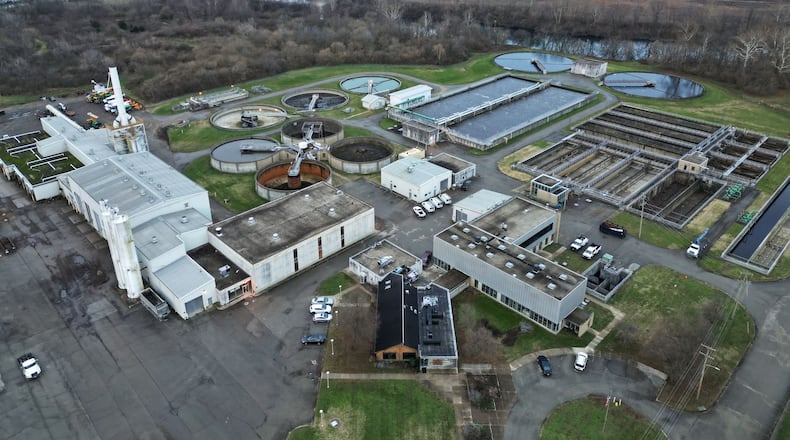In the end, though, it’s projected to save the city money as it pays to have biosolids with less water hauled away, he said.
“Pilot studies have shown we have an 8 to 10% increase of removing water from our sludge,” Kessler said, “so that should be less hauling expenses to remove our biosolid products, and that would reduce the amount of trucking and disposal fees.”
The wastewater treatment plant at 2451 River Road handles most of the sewer line flows in Hamilton, though the city does have a smaller one.
The main underground sewer pipes that enter the facility and go to the influent pump station. Material goes through a screening, removing debris and grit. Then, the sewage goes into one of three clarifiers where it stratifies, with things that float on top, liquids in the middle and the sludge at the bottom.
That sludge goes through the biosolids process.
The tanks were part of the original plant built in the mid-1950s.
“There’s a lot of concrete work and repairs that need to be done on the tanks because they’re 70 years old,” including the need to replace time-worn motors and drives, Kessler said.
After the tanks, the waste goes into an adjacent building for the dewatering process, which comprises a set of three belt presses that squeeze out water so it’s as dry and light as possible for hauling, the cost of which is based on weight.
The belt presses were installed in 1999 and are also at the end of their lives, and replacing these is where much of the expense will happen, Kessler said.
The city hired Strand Associates in 2019 to help develop a master plan for the plant, which includes system upgrades with the latest and most efficient technology. Instead of replacing the belt filter presses with something similar, he said based on a pilot study of various products, the city will install centrifuges.
Hamilton received two bids on the project, which were opened on Dec. 17. In January, Hamilton City Council will expected to consider a staff recommendation for one of the two bids received.
Kessler said it could take a year to get the centrifuge equipment on site, and another year to install.
“It’s a lot of equipment,” he said.
City Council will also need to consider how to fund the project. Hamilton has applied for an Ohio EPA Water Pollution Control Loan Fund, but it will be up to council if it wants to borrow funds or pay for it a different way.
The lifespan of the equipment is estimated to be 20 to 25 years.
About the Author

